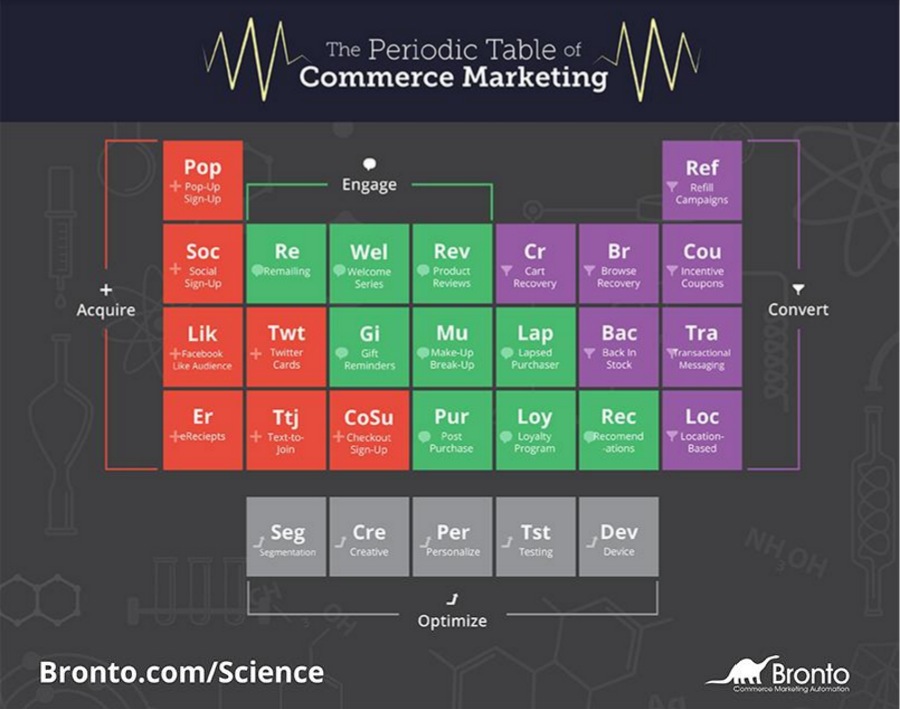The new science of commerce marketing
Share
Shannon Ingrey shares a new way to think about commerce marketing now that it’s a quantitative science.
In the past, marketing was all about advertising across outbound channels – radio, TV, print, and the like. Fair dinkum marketing meant having iconic content to push to those channels – creative that became part of our culture: Paul Hogan promising to slip “an extra shrimp on the barbie;” Louie the Fly coming straight from the rubbish to your bedroom; Sam Kekovich reminding us, “Don’t be un-Australian; serve lamb on Australia Day.”
Marketers would heave their collective intellect into the cosmos of maximum viewers and listeners and hope that their content translated into brand awareness and sales.
We knew we were heard. Slip Slop Slap. Matter of fact, I’ve got it now. The burgers are better at Hungry Jacks. I can feel a XXXX coming on. We’re happy little Vegemites. We’re Aussie kids, we’re Weetbix kids.
Some campaigns and slogans became part of everyday life. The problem was we had little capability to directly measure the results. Did the ad make you want to buy the product or did you spend the day humming the music without remembering the product?
Hindsight reporting might have shown a correlation between a campaign and sales results, but even in that simpler age, marketers couldn’t connect the results to a specific initiative. Marketing was an art of persuasion and guesswork.
The emergence of digital channels has changed marketing into a quantitative science. With a new richness of data from online sources, we can now know more than ever about the people we’re reaching, how they’re responding, and whether those responses lead to revenue. Marketing in the digital world is now more:
- Interactive: Through websites, apps and social media, shoppers have more ways to not just receive our messages but to respond. Marketing messages, tactics and timing can be based on the customer’s previous actions. It’s now a two-way conversation with an empowered consumer.
- Individual: With real-time data capture and the ability to integrate diverse data streams, online and offline, marketers can finally have the coveted 360-degree view. Every time customers visit your website, you can offer a personalised and relevant experience. And soon we will be able to replicate that in-store, as well.
- Iterative: Digital channels make it easy – imperative, actually – to apply experimental science to continuously test, tweak and repeat to find the sweet spot where your tactics yield the best results for each market segment.
The periodic table of commerce marketing elements
We know from case studies that a highly personal, omnichannel approach can double or triple revenue. But where do you focus your resources? There are millions of possible combinations of tactics, offers, messages, timing and segments. How do you put order to this infinite web of options?
To answer that question on a more universal scale, scientists developed the periodic table of chemical elements, organised in terms of each element’s protons, electron configuration and recurring properties.
Why not apply the same principles to consumer behaviour and relationships among marketing tactics? The periodic table is a useful construct to organise the growing complexity of the omnichannel marketing environment. Each element has a purpose and specific attributes, and each has a relationship to other elements in the table.
This commerce marketing periodic table of elements can be conceptualised in four categories:
- Acquire: The objective here is to add prospects and customers to your marketing database. Elements could include pop-up sign-ups, Facebook likes and e-receipts.
- Engage: Use shopper data to improve the timing and relevance of interactions with them. Sample elements include welcome emails, post-purchase emails and anniversary reminders.
- Convert: Turn a visitor into a buyer and a buyer into a relationship. Elements could include shopping cart recovery emails, back-in-stock emails, location-based messages and better transactional messages.
- Optimise: Continually improve the experience by testing with different segments, creative or other variables in a disciplined, iterative approach.
Click image to enlarge.
The optimal formula will be unique for each brand and for audiences and scenarios within the brand. By continually applying the ‘optimise’ elements, you will discover your own formula for success and understand how that formula changes over time – because it inevitably will.
Marketing is meant to be creative, engaging, and inspirational. To accomplish that in today’s consumer-driven culture, marketers must experiment, test and refine their efforts in a true scientific fashion to hone in on strategies with predictably repeatable results.
Shannon Ingrey is general manager of Bronto Software Australia.
















